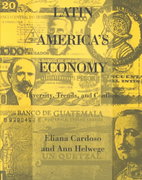Question
Suppose there are two types of workers, high ability and low ability and and equal numbers of each in your labor market, but you can't
Suppose there are two types of workers, high ability and low ability and and equal numbers of each in your labor market, but you can't observe each workers ability before you hire him. Suppose each worker can choose an effort level 3 which is any number greater than 0.
High workers output q=2e.
Low workers output q=e
All workers have a cost of effort function equal to c(e) = e^2
Their utility from a wafe of w and an effort level of e are U(w,e) = w-e^2
It is standard practive to pay workers per unit of output so you need to decide on a per-unit rate to offer, denoted b.
Thus Wage is w=bq
The market price for your good is 5 and your cost of raw materials is 1 per unit. So
Profit = 5q-q-w=4q-w. Assume no fixed costs.
Question a. What is the optimal effort level for a low-ability worker receiving a per-unit wage of b in this scenario? What would the output of such a worker be?
Step by Step Solution
There are 3 Steps involved in it
Step: 1

Get Instant Access to Expert-Tailored Solutions
See step-by-step solutions with expert insights and AI powered tools for academic success
Step: 2

Step: 3

Ace Your Homework with AI
Get the answers you need in no time with our AI-driven, step-by-step assistance
Get Started


